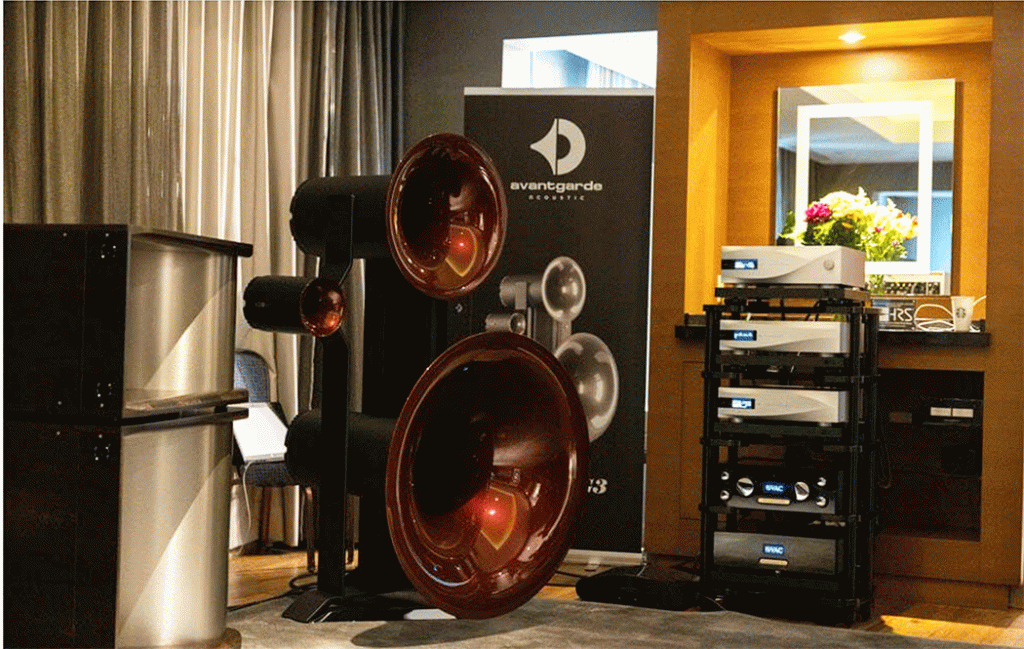
Attending audio and video shows has always been one of my favorite things to do. Chicago’s AXPONA show (Audio Expo North America) at the Renaissance Hotel in Schaumburg, Illinois, certainly stands with the best of the best. One special feature is that it is open to the public, not just to people in the audio industry. For anyone into music, hearing great music systems in hundreds of hotel rooms that had been specially treated for sound is absolutely sensory overload!
It’s the equivalent of driving all of the great sports and luxury cars after having previously experienced only inexpensive compact cars—the design, finish, and performance are finally appreciated. There’s great pleasure in listening to a recording that sounds so real that we feel we’re in the presence of live musicians.
As if that level of experience wasn’t enough, on two of the nights, AXPONA also featured live concerts of stellar recording artists known for the high quality of their recordings. Even if you didn’t buy the discounted three-day pass in advance, the at-the-door price for three full days of critical listening in hundreds of rooms, plus concerts and educational seminars, totaled only $100! The two live concerts alone were worth more than that.
You can attend for one day, but you’ll never see enough. I was there from start to finish and didn’t have time to get to four floors of exhibit rooms. Parking is free, so you can come and go as you please to catch a meal at one of the wonderful nearby restaurants, to shop, or to go to your motel.
I met, dined, and listened with the people that sell me wonderful audio and video products. Most sales pitches are left for another time, with more product knowledge than business talk shared in those few days. Everyone was friendly, so often I learned more from the hobbyists than from the experts, and that fostered some new friendships. My Saturday night dinner was with a custom AV designer whom I met in line during my annual pilgrimage for a Portillo’s Italian Beef and Sausage Combo sandwich. We spent hours comparing notes . . . about audio, not the sandwich, although I did learn that his out-of-state buddies told him that Portillo’s was a mandatory stop on any trip to Chicago.

At previous AXPONA shows, the most important thing the equipment reps could do was to put on a perfectly recorded piece of music that showcased how good the equipment sounded. This year, I noticed that the music was often a very mediocre recording, chosen for its representation of an era rather than its high recording quality. Much has been written about how music from the past can wake up memories of a significant time in one’s youth, which may explain why old formats like LPs are enjoying a resurgence in popularity in spite of their sound limitations.
Fortunately, many of the rooms used stunningly beautiful natural recordings of acoustic events that showed that audio equipment and TVs are better than ever! New boundaries keep being broken. My favorite discoveries this year were speakers that could properly represent the newest recordings, with absolutely live dynamics. Full dynamics in rock or big orchestra classical music can exceed 100 decibels from the loudest to the softest sounds of the event.
In the Top 40 radio days of the 1960s, AM radio only had 20 to 40 dB of dynamic range. Worse yet, every station tried to be the loudest on the dial, so their broadcast was squished down to nothing by compressing all of the music. Eventually, audio systems were built that could do justice to an LP record, which had about 60 dB of musical dynamics. Soon after, FM radio moved music away from AM by potentially matching the dynamics of the LP. The compact disc was invented to give us an album with live dynamic content that we could use at home. A few brilliant engineers discovered and corrected the timing errors that caused the sound’s roughness.
In 1999, Super Audio CD was born. Using the DSD format, it had about 120 dB of dynamic range, but in the studio it was hard to mix. Soon after, computers could store and play 24-bit recordings that now gave us a theoretical 144 dB of dynamic range!
Today, a new generation of recording engineers makes recordings without any compression, but they have discovered that most speakers, including the most expensive ones in the world, are unable to recreate the full live punch of these recordings. This is the first year that I’ve heard many speaker manufacturers address this limitation. And not a moment too soon, now that the recording industry is making recordings that are as powerful as live.
Next month, I’ll share more amazing AXPONA discoveries.
Paul owns Golden Ears in Fairfield, Iowa.
